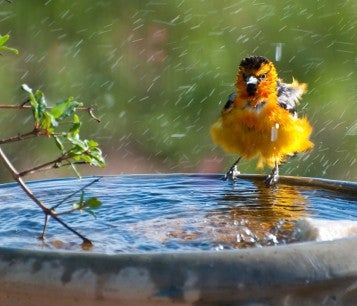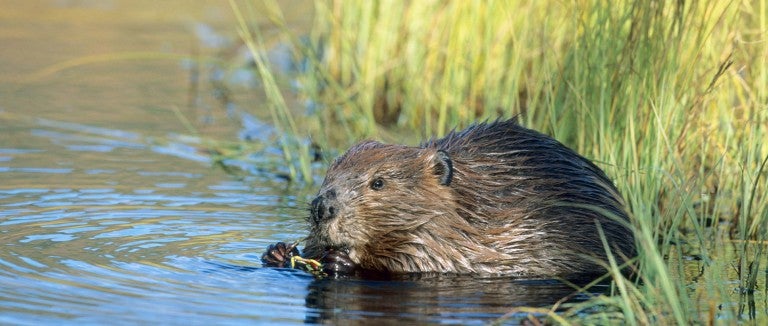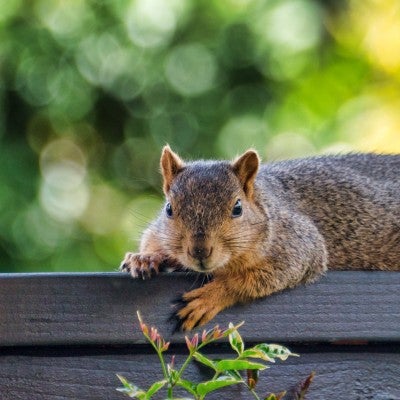Beavers are making a comeback. Nearly driven to extinction by the fur trade, nature’s best architects are now 6–12 million strong in the United States. This return will provide significant benefits to our country’s ecology, which has lost much of its wetlands to development and agriculture.
Despite this, we often find ourselves in conflict with beavers over who gets to occupy floodplains. Due to the human expense and effort required to develop these areas, it is most appropriate to allow beavers to live and build in their habitat without disruption. We can gain great benefit from working with, rather than against, this industrious rodent.
Contents
- What are common problems with beavers?
- How can I protect my trees from beavers?
- What are some deterrent devices for dam-building?
- Why should we tolerate beavers?
What are common problems with beavers?
The two most common problems associated with beavers are flooding that results from blocked structures (such as culverts) and damage caused to trees.
Tree damage
Damage to trees in urban and suburban areas is likely to be noticed before it becomes critical, but perhaps not before a valuable tree or two has been lost. Operators of commercial forests attribute millions of dollars of timber loss annually to beavers.
Flooding
Flooding becomes a crisis after unusually heavy rain or snow enters bodies of water with significant blockages. While beaver dams sometimes contribute to this type of flooding, they can also store water during periods of drought and slow down the movement of water from land to river systems, thereby preventing more serious floods and significant financial damage downstream.
In the past, “solutions” to the presence of beaver dams have often involved the use of heavy machinery to tear the dams apart or explosives to blow them up. Neither approach is particularly useful: Beavers will quickly attempt to rebuild their structures using new material. Dam destruction only exacerbates any perceived or real damage they may have done in the first place.
Likewise, trapping or shooting resident beavers is ineffective, because it only creates a vacuum into which new beavers will move, often sooner rather than later. All of the strategies aimed at removal or destruction deny the presence of beaver wetlands—landscapes that are both appropriate and needed.
How can I protect my trees from beavers?
DIY trunk guards
Place homemade tree guards around the trunk. The guards should be about three feet high and made of galvanized welded wire (2 x 2 or 2 x 3 inch is recommended). This material can be found in any large hardware or home improvement store, usually sold as fencing. Try not to use the lighter chicken wire, as it is generally too flimsy to provide good protection.
Finer-mesh screening—such as that used for windows as bug screen—is more expensive, but usable if welded wire is unavailable. It can be especially effective in protecting small (two- to six-inch-in-diameter) ornamental or specimen trees.
Guards may need to be pinned to the ground around larger trees, mulching within the guard to keep weeds at bay.
Paint and sand
The USDA has shown some success in protecting trees by painting their base with a mixture of coarse mason’s sand (30–70 mil) and exterior latex paint. (The ratio is twenty ounces of sand to one gallon of paint.) The abrasive quality of the mixture may deter beavers. The paint color can be matched to the tree so it will blend in.
Blocking trees with fencing
Because beavers are not good climbers, three to four-foot-high fencing can also be a highly effective way to block their access to larger groves.
Check the fences frequently to make sure they are intact and that beavers haven’t pushed under them, especially where the fences cross established haul-outs, where beavers like to come from water to land.
An electrified wire strung approximately four inches off the ground can also prevent beaver from entering an area. This type of fence can be especially effective in a small garden or crop plot when set up to protect plants for a few weeks and taken down afterward.
No matter how big or small your outdoor space, you can create a haven for local wildlife. By providing basic needs like water, food and shelter, you can make a difference in your own backyard.

What are some deterrent devices for dam-building?
As with many non-lethal approaches, the devices used by experts to stop dam-building are deterrent in nature: they take advantage of beavers’ natural behavior and preferences.
The design and installation of deterrent devices is complex, and technical assistance from experienced professionals is recommended when using them. Experience in reading sites and predicting how beavers will respond to attempts to defeat their dam behavior can be invaluable. It is also necessary to be aware of local, state and federal regulations when planning to install these devices.
Some tools that can help prevent or control flooding caused by beaver dams:
- The Beaver Deceivers™, Round Fence™ and Castor Master™
- The Clemson Leveler
- CulverClear™ technologies
Whether made out of wood or steel frames, the overall savings these devices represent compared to the cost of repeated beaver removal or dam destruction, make them highly cost effective as well as humane.
Additional strategies
Notching an existing dam and running a pipe through the gap will stimulate the beaver to repair the dam at the site of the notch but not at the pipe ends, which will allow the water to be set at a level that meets human needs.
To ensure the upstream end of the system isn’t blocked by beavers or debris a filtering device, often called a Round Fence™, can be installed. These devices consist of a flexible corrugated plastic pipe, sized to the particular job but usually somewhere between eight and fifteen inches in diameter.
In the past, the culvert pipes installed under roads were often undersized and hence easily plugged by beavers. Newer installations generally take beaver activity into account and are designed correctly from the start to prevent plugging, but there are still a lot of smaller ones out there.
For these, the Beaver Deceiver™, can be effective, either in conjunction with Round Fence™ and a pipe system at its front, or as a stand-alone device. This strategy involves creating a fence barrier in front of the culvert (usually shaped like a trapezoid but adaptable to different configurations as well) that takes the beavers so far away from running water at the culvert head that their instinctive motivation to dam is defeated.
Why should we tolerate beavers?
Beavers play an important role in establishing and maintaining wetlands—learning to live peacefully with these animals is important to the health of their environment. Beaver dams enhance their environment by:
- Providing habitat for many sensitive plant and animal species.
- Improving water quality.
- Controlling floods by slowing water movement.
Beaver colonies and dams also provide an accessible and educational opportunity for people to learn about local ecosystems and enjoy wildlife through observation and photography. Expanding public education in areas where beavers live can lead to public appreciation for their large contributions.

